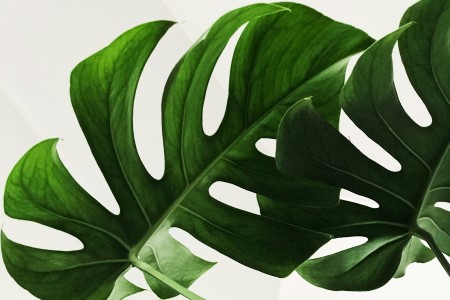Market Financial Solutions are a bridging loan and buy-to-let mortgage provider and are not legal, financial, investment or tax advisers. This document is for informational purposes only and does not, and should not be considered, to constitute legal, financial, investment or tax advice or be relied upon by any person to make a legal, financial, investment or tax decision. Therefore, Investors are encouraged to seek appropriate professional advice. The information in this content is correct at time of writing.

Many property investors across the UK have likely thought about turning a detached house into 2 semis (semi-detached property), or otherwise dividing a house into two dwellings. We have a notorious housing deficit in this country. There’s simply not enough supply to meet demand. Especially in places like London and other big cities.
Turning a detached house into 2 semis, or some other version of house splitting, could go some way in resolving the issue. For many developers or start-up investors, taking this route could be easier than building properties from scratch.
But, obviously, dividing a house into two dwellings, or possibly even more, may be easier said than done. There are many considerations to factor in, such as how to legally split property, and how much does it cost to split a house into two flats.
On top of these concerns, investors may also want be prepared to adapt to complications and unforeseen challenges. To help investors get started, we’ll cover some of the initial details they’ll need to be aware of.
How to legally split a property
From the outset, investors will likely want to consult with several industry professionals to ensure they’re on the right side of the rules. Solicitors should be able to guide them on how to legally split property – are there any caveats in the deeds? What about freehold considerations? Do new leases[1] need to be drawn up?
They’ll also likely need to attain planning permission[2]. They might also need to contact utility companies about providing each new unit with its own electricity, gas, and water.
Architects can help ensure the new apartments meet minimum space requirements and the like. Designers can help with what’s aesthetically desirable in modern flats.
This is just an overview in what investors will need to do to divide a house into two dwellings. They’ll want to prepare thoroughly before turning a detached house into 2 semis, or other similar plans. But, there are plenty of incentives in progressing with such endeavours.
Should you divide a house into two dwellings?
The market is desperate for more stock, especially in the rental scene. Demand for rented homes regularly outpaces supply[3], especially in London and other major cities. And, while improvements have been noted, demand is outstripping supply in the buying market[4]. Regardless of whether an investor is looking at homeownership or tenancies, more options are needed.
Investors could help with these imbalances by creating more homes out of existing properties. By meeting this demand in the market, they’ll be able to expand their portfolio, and spread their bets.
Having multiple tenants or buyers may also provide somewhat of an insurance policy. If one tenant falls behind on their rent, or a buyer pulls out of making a purchase, investors will at least have a separate asset to try and balance things.
Generally, having more homes to rent out or sell on could lead to higher revenues and yields. But beyond the practical elements of making the changes to the home, investors will also need to think about the potential costs or downsides.

Budgeting – costs and profits
Investors will also want to do their research on where’s best to invest. There’s demand for more housing across the UK. But some locations need more residential properties than others.
Student towns will likely be desperate for decent accommodation and HMOs. There are also more specific geographic considerations. London needs more homes. But this is probably truer in the hotspots of Kensington or Camden[6], than Canary Wharf or Lombard Street.
It’s also important not to lose sight of a budget. There’s little point going through with dividing a house into two dwellings if the project doesn’t make a profit. Investors should find the answer to the question of how much does it cost to split a house into two flats before making any major commitments.
Costs for converting a single dwelling into self-contained flats will vary greatly. They’ll be swayed by a huge range of variances, including the complexity of the design[7](s), the extent of the structural works, and the condition of the house being worked on. And of course, there are professional, legal, and statutory fees to pay – which will likely be higher in the Southeast of England than they will be in Wales, for example.
While it’s difficult to find an average, Mortgageable believes that converting a structurally sound house, with existing kitchen and bathroom facilities, into flats could cost between £15-£25k[8]. Obviously, if investors are working on multiple properties, mortgaged or not, this could stretch into the hundreds of thousands.
How can all this be financed?
Fortunately, there are a range of options available to investors for turning a detached house into 2 semis, or any other similar project. At Market Financial Solutions, we have many specialist products specifically designed to aid with conversion or expansion projects.
Our permitted & light development bridging loans can allow investors to get the ball rolling on costly renovation or conversion plans. They’re available for any changes planned, whether they need planning permission or not.
We also have developer exit loans for those coming to the end of their development project. These can cover the original development finance secured, provide breathing space to finish last-minute works, the working out of long-term financial solutions, or finding the right buyers/tenants for the new assets.
If an investor’s background is particularly complicated, our complex loans will help provide some clarity. We have no problem working with expats, corporate setups, or those with adverse credit histories.
If investors want to move ahead with any new development projects, but don’t know where to turn for financial support, we may be able to get a bridging loan in place for them in as little as three days.
Development Exit Finance
A complete guide
Everything you need to know
- Benefits & costs
- Difference to development finance
- Application & loan process
- Repayment options
[1] https://hoa.org.uk/advice/guides-for-homeowners/for-owners/legally-split-property-titles/
[2] https://hoa.org.uk/advice/guides-for-homeowners/i-am-improving/do-i-need-planning-permission/
[3] https://www.zoopla.co.uk/discover/property-news/rental-market-report/
[4] https://reports.hometrack.com/uk/insight/uk-house-price-index/february-2024-house-price-index/#:~:text=The%20lack%20of%20supply%20of,financial%20crisis%2C%20has%20eroded%20supply.
[5] https://www.gov.uk/government/publications/stamp-duty-land-tax-abolition-of-multiple-dwellings-relief-from-1-june-2024
[6] https://metro.co.uk/2023/03/30/the-share-of-your-wage-it-takes-to-rent-in-each-london-borough-18528299/
[7] https://urbanistarchitecture.co.uk/converting-house-into-flats/
[8] https://www.mortgageable.co.uk/mortgages/converting-a-house-into-flats/





